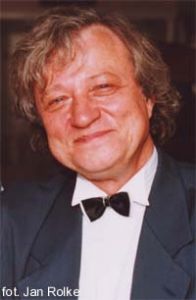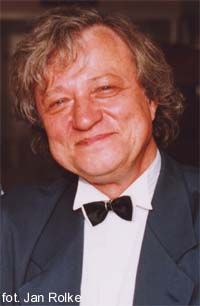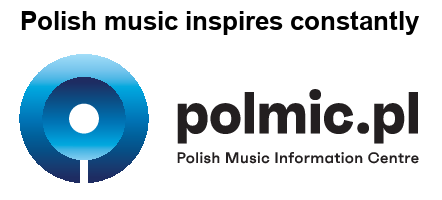Krupowicz Stanisław
-
composer
composer, born on 25th November 1952 in Grodno. In 1971-76, he studied at the Department of Mathematics and Mechanics of Warsaw University. In 1975-81 he studied composition with Tadeusz Baird and Włodzimierz Kotoński at the State Higher School of Music (now the Music Academy in Warsaw), from which he graduated with honours. He participated in summer courses for composers in Bayreuth (1979) and Darmstadt (1982). In 1982-84 he participated in the activity of the Independent Studio of Electroacoustic Music. He received a Fulbright Foundation grant to study composition and computer music under John Chowning and Leland Smith in the Center for Computer Research in Music and Acoustics at Stanford University, California (1983-84). In 1986 he received Prix-de-Paris – a Stanford University grant for the composition of a work at the Institut de Recherche et de Coordination Acoustique/Musique. In 1989 he was awarded a fellowship of the Barbara Piasecka-Johnson Foundation and Stanford University for a study of the Stradivarius violin. In the same year he was awarded the Doctor of Musical Arts degree in composition from Stanford University. In 1991-92 he was a Leverhulme Post-doctoral Fellowship holder.
Stanisław Krupowicz has received prizes at numerous competitions for composers, including in 1981 – 2nd prize in the Young Composers' Competition of the Polish Composers' Union for Tempo 72 for amplified harpsichord and strings (1981); in 1985 – 2nd prize in the International Computer Music Competition NEWCOMP in Boston for Tako rzecze Bosch [Thus Spake Bosch] for tape (1985); in 1987 – an honourable mention in the 8th Irino Prize International Competition in Tokyo for Wariacje pożegnalne na temat Mozarta [Farewell Variations on a Theme by Mozart] for amplified string quartet and tape (1986). He twice received the Alexander Borodin Foundation Award – in 1989 for Tylko Beatrycze [Only Beatrice] for amplified string quartet and tape (1988) and in 1990 for Tako rzecze Bosch [Thus Spake Bosch] for tape (1985). In 1994 his composition Fin de siècle for orchestra (1993) received a recomendation of the International Rostrum of Composers in Paris.
His compositions have been performed in many countries of Europe, Asia and both Americas.
Member of the "Warsaw Autumn" Repertoire Committee in 1993-96; co-founder and in 1998-2000, president of the Friends of the Warsaw Autumn Foundation. In 2005, he was also one of the initiators of the "Musica Electronica Nova" Festival in Wrocław, of which he was the first artistic director.
He teaches composition and computer music at the Academy of Music in Wrocław. He is also the head of the Academy’s Computer Composition Studio, which he initiated and organised. In 2013 he was granted the academic title of Professor of Musical Arts.
Creation
The character of Stanisław Krupowicz’s music has been determined to a large extent by his interest in mathematics and computers, which he earlier pursued at Warsaw University during his studies at the Department of Mathematics and Mechanics. After the completion of these studies in 1976, he studied composition at the State Higher School of Music with Włodzimierz Kotoński, the master and pioneer of Polish electroacoustic composition. Krupowicz continued his work on computer music in the Center for Computer Resarch in Music and Acoustics at Stanford University, California, first as a postgraduate student with a Fulbright grant, later – as assistant researcher.
In 1984, Krupowicz made his “Warsaw Autumn” debut with a piece for tape bearing the English title Music for S, which was in fact a dedication to the underground “Solidarity” movement, abbreviated because of censorship. The music was prepared at Stanford University and used computer equipment. In the commentary published in the “Warsaw Autumn” programme book, the composer described this work as a result of “unremitting struggle with a soulless mechanism.” The result was greeted with applause, though the “Polskie Nagrania” label released a record with the Warsaw Autumn concert on which Music for S could be heard... backward!
The struggle with the machine was less severe, it seems, in the case of Concerto for tenor saxophone and computers, written in 1987. Work on this composition was, however, very time-consuming. In the 1987 “Warsaw Autumn” programme book, the composer wrote: “When starting my work on this piece in March 1984, I did not realise that it would take so much time. The fact that the saxophone part had to be played by a musician made me more sensitive to the issue I had long been considering: the problem of a human player’s interaction with a tape during a live performance. I had previously believed that the tape, which by its very nature presents the final version of the recorded music, leaving no room for interpretative freedom, stands in radical opposition to the fundamental idea of creative performance, which takes the freedom of interpretation for granted. It is the performer who gives a precise musical shape to the score, which by itself gives but an approximate idea of the composer’s intentions. It is due to interpretation that every performance of the same familiar work can become a new and fresh experience. It is a commonplace that during a music performance, apart from elements pre-conceived during the composition process, there is always some margin of freedom which results from the unique, spontaneous reaction of the performer to the other co-performers, to the audience and to the hall’s acoustics. For these reasons I knew that I could not write for tape and instrument. But, if it cannot be a tape, then what?
Music is capable of giving threefold satisfaction: the joy of creating (composing), of listening, and of music-making (playing together). This third kind of joy, in works for instrument(s) and tape, becomes rather dubious and resembles the mental state of an unhappy lover who struggles in vain for a reciprocation of his feelings. Such was my state of mind when I repeatedly began, without success, to compose my Concerto. Time proved to be the best remedy, as it usually is.
Over the last few years, with the development of computer technology, we have witnessed the appearance of microcomputers with specialised hardware, which are capable of very quickly synthesising various sound colours, while the establishment of the MIDI format allows the musician precisely and effectively to control those colours by means of such familiar tools as the keyboard, the violin or the drum. Microcomputers equipped with high-tech program language compilers have made it possible to use the microcomputer to generate configurations of non-trivial signals which control the MIDI, broadening the musician’s performance abilities in this way. And, as all this takes place in the real time, tiny nuances of pitch, volume and tempo can be controlled while playing live. This technology appears to have successfully overcome the frustrating “tape syndrome” which I described above.”
The technology described here in such detail by the composer, who is also an information scientist, is well known to the modern audience as “live electronic”. Thanks to this technology, the painstaking work on the tape with an electro-acoustic composition, once undertaken in the studio, can now be carried out live on the stage. The piece can now be born live in concert, similarly to works by Bach, Mozart, Chopin or Lutosławski. The computers and electro-acoustic equipment play the same role onstage as the piano, the violin and other instruments in the orchestra. This is the solution to the problem of “unremitting struggle with a soulless mechanism.” Later, Stanisław Krupowicz frequently used the possibilities of “live electronic”, but his last two works have a traditional scoring: Miserere of 1996 for soprano and two a cappella choirs, and Christmas Oratorio (1997) for soloists, choir and orchestra. Will he return to computers?
Compositions
Four Pieces for piano (1975)
Introduction and Passacaglia for string quartet (1976)
Chapter XLVII to excerpts from James Joyce’s Ulisses for female reciting voice and orchestra (1976)
Stochos for organ (1977)
De metamusicae to extracts from Plato, Aristotle, Epicure and others for soprano, alto, bass and chamber ensemble (1977)
Larghetto for oboe d’amore and orchestra (1978)
Commentary [version I] for mixed choir (1978)
Ardo 4031 for wind quintet (1979)
Epiphora for 44 strings (1979)
Fassquel for flute, bass flute and two Synthi AKS synthesisers (1979)
Symphony (1980)
Tempo 72 for amplified harpsichord and strings
(1981-2016)String Quartet No. 2 (1982)
Easter Disloyalty of CD for optional instruments (1982)
A Certain Case of a Certain Generalised Canon in the Fourth and Fifth for nine performers (1983)
Unquestioned Answer, variation on the theme by Ives for chamber orchestra (1984)
Music for S for tape (1984)
Half a Dozen Chaste Stanzas for piano (1985)
Thus Spake Bosch for tape (1985)
Farewell Variations on a Theme by Mozart for amplified string quartet and tape (1986)
Halfway for tape (1986)
Concerto for tenor saxophone and computers (1987)
Nightfall for tape (1987)
Only Beatrice for female reciting voice, amplified string quartet and tape (1988)
Alcoforado for tape (1989)
Smoking Room Blues for MIDI ensemble (1990)
A Lighter Shade of Grey for violin and tape (1992)
Fin de siècle for orchestra (1993)
Polonaise 1995 for orchestra (1995)
Certain Cases of the Generalised Mixed Cadence for synthetisers and computers (1995)
Commentary [version II] for mixed choir (1996)
Miserere for soprano and two mixed choirs (1996)
Christmas Oratorio for soloists, mixed choir and orchestra (1997)
444 for string quartet (1998)
Gratanter iubilemus for two a cappella choirs (1998)
Terre Minus, performance (1998)
Tous Ensemble, performance (1999)
Fanfares for ACH for chamber orchestra (2000)
Paragon Paradigm for sinfonietta (2000)
Centum annos for alto, improvising conductor and a cappella choir (2000)
Partita for cello and computers (2002)
Europa, computer opera in one act after William Blake (2004)
Nativity na chór a cappella do tekstu Wilama Blake’a (2004)
Lament of the Republic for alto and computer to words by Mikołaj Rej (2006)
...everything that lives is holy... for a cappella choir to words by William Blake (2007)
Toplap Music for computer quartet (2009)
Two Sides for piano (2009)
Prolongement for amplified string quartet and computer (2009)
Opus 10 for computer and ambisonic sound projection (2010)
Chopin’s Computer op. 10, audiovisual show (with Marcin Bortnowski and Marcin Rupociński) (2010)
Computer Concerto for computer and orchestra (2011)
Machinæ cœlestes for soprano, choir, computers and orchestra (2013)
Piano Concerto (2013)
America, computer opera to a libretto based on the poem America by William Blake (2014)
Sotto voce for violin, clarinet, cello and piano (2015)
Conversation for percussion trio and video (2016)
Multimedia Composition for 3 computers, harpsichord, accordion, choir and video (with Marcin Bortnowski and Marcin Rupociński) (2021)
Fusionfonia. Muzyka ziemi ukraińskiej for soloists, jazz ensemble, folk ensemble, computer trio and orchestra (with Ivan Taranenko, Marcin Bortnowski and Marcin Rupociński) (2022)
Literature
Baculewski Krzysztof, Krupowicz Stanisław, In: Encyklopedia Muzyczna PWM [PWM Music Encyclopaedia] (biographical part, ed. by Elżbieta Dziębowska), vol. „klł”, PWM, Kraków 1997
Thomas Adrian, Krupowicz Stanisław, In: The New Grove Dictionary of Music and Musicians. Second Edition (ed. Stanley Sadie), vol. 13, Macmillan Publishers Limited, London 2001
Topolski Jan, Stanisław Krupowicz [wywiad], "Glissando” 2006 nr 9, s. 104-107
Łabuś Katarzyna, Krupowicz i Szymański: dwa oblicza surkonwencjonalizmu w polskiej muzyce współczesnej (1), "Muzyka21" 2009 nr 5, s. 33










